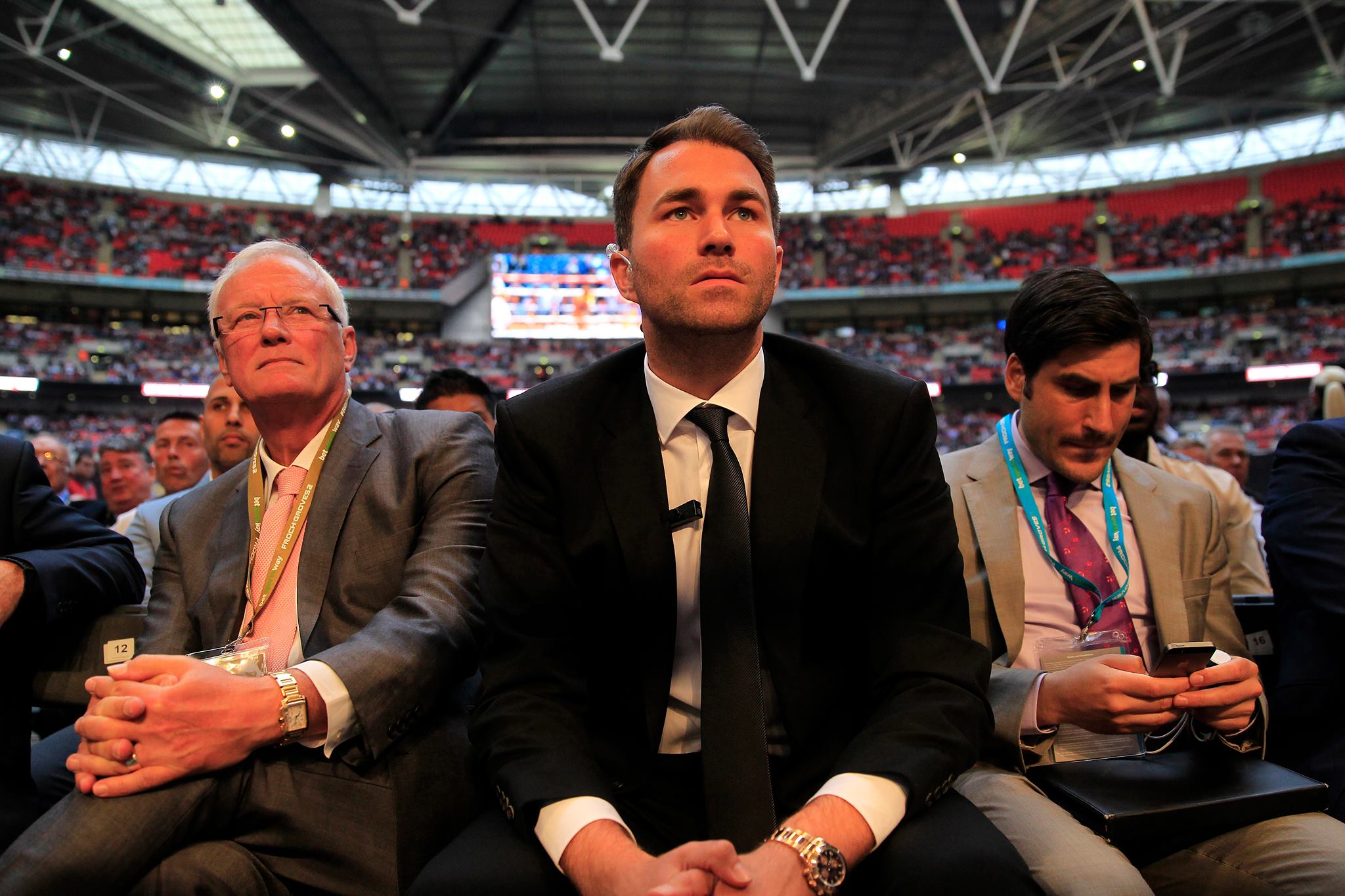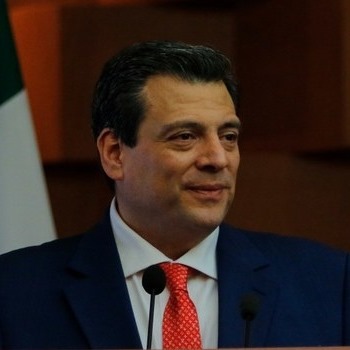Obesity has reached epidemic proportions not only in the United States, but also throughout the world. The World Health Organization says obesity is increasing rapidly even in very poor countries, especially in urban areas. The epidemic of obesity has reached even the youngest members of society. According to the President’s Council on Physical Fitness and Sports, childhood and adolescent obesity has tripled since 1980, and has doubled among children aged 2-5. Clearly, we need a new approach to nutrition and fitness if we are to stop this devastating epidemic.
Several studies have identified a triad of factors related to childhood obesity: poor nutrition, lack of exercise and television watching. The most common barriers to exercising for children and adults are lack of time, lack of access to exercise facilities and equipment and lack of a safe place to exercise in. At the same time, schools are decreasing physical education and other programs because of lack of funding and safety considerations.
So, what’s the answer? How do we make it possible for younger generations to be active and healthy? How do we remove the barriers to exercise? And how do we motivate children, teens and adults to exercise?
What Can Parents Do?
The most important thing parents can do to encourage their children to exercise is to make it a family affair. Model good lifestyle choices by exercising yourself. Exercise as a family—go for walks, shoot hoops, rollerblade, ride bikes—but do it together.
Parents can limit the amount of time children watch television or other electronic media, like video games. Children should not be sedentary for more than an hour at a time unless they are asleep, and should get at least 60 minutes of exercise a day.
Parents who have time and resources can get involved in community efforts to improve exercise opportunities for children. Encouraging schools to increase physical education opportunities and working to provide safe parks and playgrounds will benefit all the children in a community.
What Can Communities Do?
Communities can increase awareness about the problem of childhood obesity and educate people about its causes and effects. They can develop and implement solutions such as community sports programs. Communities can remove the barriers that keep children and adults from exercising. They can:
• Make sure programs are available at times that are convenient to families and children, including during school holidays.
• Provide exercise facilities that are conveniently located and are available to all community members—especially children.
• Make sure that children have safe places to play and exercise.
Developing a New Exercise Paradigm
Until the last half of the twentieth century, people didn’t have to think about exercise; normal activities provided plenty of exercise for most people. During the last half of the 20th century, exercise became something you had to do in addition to your normal activities. For some people, it became a healthy habit or a discipline. For an awfully lot of people exercise became optional. We need a new exercise paradigm for a new generation. We have to figure out how to make an active lifestyle the new norm and how to integrate that concept into everything we do—work, school, play, home life, religious activities and community life.



















AlbertImipt
06/25/2024 at 3:59 am
pin up kazino https://azerbaijancuisine.com/# pin-up cazino
pin up apk yukle
Williamfrumn
06/26/2024 at 8:24 am
mexican online pharmacies prescription drugs: mexican pharmacy – mexican border pharmacies shipping to usa
JeffreyMok
06/26/2024 at 8:41 am
https://northern-doctors.org/# mexican rx online
Richardled
06/26/2024 at 8:43 am
mexico drug stores pharmacies [url=https://northern-doctors.org/#]mexican northern doctors[/url] buying prescription drugs in mexico
JeffreyMok
06/26/2024 at 11:51 am
https://northern-doctors.org/# mexico pharmacy
Williamfrumn
06/26/2024 at 1:34 pm
mexican mail order pharmacies: mexican pharmacy – mexican border pharmacies shipping to usa
JeffreyMok
06/26/2024 at 2:51 pm
https://northern-doctors.org/# buying prescription drugs in mexico
Williamfrumn
06/26/2024 at 3:56 pm
п»їbest mexican online pharmacies: mexican pharmacy online – mexican rx online
Williamfrumn
06/26/2024 at 5:49 pm
mexico pharmacy: Mexico pharmacy that ship to usa – mexican pharmacy
JeffreyMok
06/26/2024 at 8:32 pm
https://northern-doctors.org/# medicine in mexico pharmacies
Williamfrumn
06/26/2024 at 9:35 pm
mexican rx online: mexican pharmacy northern doctors – reputable mexican pharmacies online
JeffreyMok
06/26/2024 at 11:16 pm
http://northern-doctors.org/# pharmacies in mexico that ship to usa
Williamfrumn
06/26/2024 at 11:28 pm
best online pharmacies in mexico: mexican pharmacy – mexican border pharmacies shipping to usa
Williamfrumn
06/27/2024 at 1:20 am
mexican online pharmacies prescription drugs: mexican pharmacy northern doctors – reputable mexican pharmacies online
JeffreyMok
06/27/2024 at 2:20 am
https://northern-doctors.org/# reputable mexican pharmacies online
Williamfrumn
06/27/2024 at 3:11 am
mexican pharmacy: northern doctors – medicine in mexico pharmacies
Williamfrumn
06/27/2024 at 5:03 am
medicine in mexico pharmacies: Mexico pharmacy that ship to usa – mexican online pharmacies prescription drugs
Williamfrumn
06/27/2024 at 6:52 am
mexico drug stores pharmacies: mexican pharmacy northern doctors – mexican mail order pharmacies
Richardled
06/27/2024 at 7:59 am
mexican mail order pharmacies [url=https://northern-doctors.org/#]mexican northern doctors[/url] purple pharmacy mexico price list
Williamfrumn
06/27/2024 at 8:43 am
reputable mexican pharmacies online: mexican drugstore online – purple pharmacy mexico price list
Williamfrumn
06/27/2024 at 10:49 am
reputable mexican pharmacies online: Mexico pharmacy that ship to usa – buying prescription drugs in mexico
JeffreyMok
06/27/2024 at 3:59 pm
https://northern-doctors.org/# mexico drug stores pharmacies
Williamfrumn
06/27/2024 at 5:47 pm
mexican drugstore online: mexican northern doctors – reputable mexican pharmacies online
Williamfrumn
06/27/2024 at 7:27 pm
reputable mexican pharmacies online: mexican pharmacy online – pharmacies in mexico that ship to usa
JeffreyMok
06/27/2024 at 9:05 pm
https://northern-doctors.org/# mexican mail order pharmacies
Williamfrumn
06/27/2024 at 9:07 pm
mexico drug stores pharmacies: Mexico pharmacy that ship to usa – mexican mail order pharmacies
Williamfrumn
06/27/2024 at 10:50 pm
mexican border pharmacies shipping to usa: buying from online mexican pharmacy – mexican online pharmacies prescription drugs
JeffreyMok
06/27/2024 at 11:48 pm
https://northern-doctors.org/# п»їbest mexican online pharmacies
Williamfrumn
06/28/2024 at 12:33 am
п»їbest mexican online pharmacies: medicine in mexico pharmacies – mexican drugstore online
Richardled
06/28/2024 at 2:08 am
mexican border pharmacies shipping to usa [url=https://northern-doctors.org/#]mexican pharmacy online[/url] buying from online mexican pharmacy
Williamfrumn
06/28/2024 at 2:08 am
medication from mexico pharmacy: mexican pharmacy northern doctors – medication from mexico pharmacy
JeffreyMok
06/28/2024 at 2:24 am
https://northern-doctors.org/# reputable mexican pharmacies online
Williamfrumn
06/28/2024 at 3:44 am
mexican pharmacy: mexican northern doctors – mexican pharmaceuticals online
JeffreyMok
06/28/2024 at 5:01 am
http://northern-doctors.org/# best online pharmacies in mexico
Williamfrumn
06/28/2024 at 6:53 am
reputable mexican pharmacies online: medication from mexico pharmacy – buying from online mexican pharmacy
Williamfrumn
06/28/2024 at 8:31 am
mexican mail order pharmacies: mexican pharmacy northern doctors – п»їbest mexican online pharmacies
Williamfrumn
06/28/2024 at 10:11 am
п»їbest mexican online pharmacies: Mexico pharmacy that ship to usa – mexico pharmacies prescription drugs
JeffreyMok
06/28/2024 at 10:20 am
http://northern-doctors.org/# mexican mail order pharmacies
Richardled
06/28/2024 at 11:06 am
best online pharmacies in mexico [url=https://northern-doctors.org/#]Mexico pharmacy that ship to usa[/url] mexican pharmaceuticals online
Williamfrumn
06/28/2024 at 11:51 am
medicine in mexico pharmacies: mexican pharmacy online – mexican online pharmacies prescription drugs
Williamfrumn
06/28/2024 at 1:28 pm
best online pharmacies in mexico: mexican pharmacy online – mexican pharmaceuticals online
Williamfrumn
06/28/2024 at 3:08 pm
mexican pharmacy: Mexico pharmacy that ship to usa – medication from mexico pharmacy
JeffreyMok
06/28/2024 at 3:44 pm
https://northern-doctors.org/# medicine in mexico pharmacies
Williamfrumn
06/28/2024 at 4:53 pm
buying prescription drugs in mexico: mexican northern doctors – mexican drugstore online
JeffreyMok
06/28/2024 at 6:29 pm
http://northern-doctors.org/# best online pharmacies in mexico
Williamfrumn
06/28/2024 at 6:36 pm
mexican online pharmacies prescription drugs: mexico drug stores pharmacies – medicine in mexico pharmacies
Williamfrumn
06/28/2024 at 8:16 pm
medicine in mexico pharmacies: mexican pharmacy – buying prescription drugs in mexico
Williamfrumn
06/28/2024 at 11:33 pm
mexican border pharmacies shipping to usa: mexican pharmacy northern doctors – buying prescription drugs in mexico online
Williamfrumn
06/29/2024 at 1:11 am
medication from mexico pharmacy: mexican pharmacy – mexico pharmacy
Jeffreyber
06/29/2024 at 2:56 am
https://cmqpharma.com/# medicine in mexico pharmacies
pharmacies in mexico that ship to usa
Ronnienop
06/29/2024 at 3:09 am
mexico pharmacies prescription drugs [url=https://cmqpharma.com/#]mexican pharmacy online[/url] mexican rx online
Stephenrhype
06/29/2024 at 5:04 am
mexican mail order pharmacies: mexican pharmacy online – п»їbest mexican online pharmacies
Ronnienop
06/29/2024 at 6:09 am
best online pharmacies in mexico [url=https://cmqpharma.com/#]pharmacies in mexico that ship to usa[/url] mexican pharmacy
Ronnienop
06/29/2024 at 8:56 am
mexican drugstore online [url=https://cmqpharma.online/#]cmqpharma.com[/url] buying prescription drugs in mexico
Ronnienop
06/29/2024 at 11:44 am
mexico pharmacies prescription drugs [url=https://cmqpharma.online/#]mexico pharmacy[/url] mexican pharmacy
DonaldBiono
06/29/2024 at 1:34 pm
mexican drugstore online
https://cmqpharma.online/# mexican pharmaceuticals online
medication from mexico pharmacy
Ronnienop
06/29/2024 at 2:30 pm
mexican mail order pharmacies [url=https://cmqpharma.com/#]cmq mexican pharmacy online[/url] medication from mexico pharmacy
Ronnienop
06/29/2024 at 5:34 pm
mexican pharmaceuticals online [url=https://cmqpharma.com/#]mexico pharmacy[/url] mexican rx online
Ronnienop
06/29/2024 at 8:43 pm
mexico pharmacies prescription drugs [url=https://cmqpharma.com/#]cmq pharma mexican pharmacy[/url] medicine in mexico pharmacies
Ronnienop
06/29/2024 at 11:28 pm
mexico drug stores pharmacies [url=http://cmqpharma.com/#]mexican pharmacy[/url] medication from mexico pharmacy
Ronnienop
06/30/2024 at 2:12 am
reputable mexican pharmacies online [url=https://cmqpharma.com/#]cmq mexican pharmacy online[/url] pharmacies in mexico that ship to usa
Jeffreyber
07/02/2024 at 2:40 am
http://cmqpharma.com/# medication from mexico pharmacy
buying from online mexican pharmacy
Ronnienop
07/02/2024 at 3:10 am
pharmacies in mexico that ship to usa [url=https://cmqpharma.online/#]cmqpharma.com[/url] purple pharmacy mexico price list
Davidtoows
07/19/2024 at 11:19 pm
mail order pharmacy india: indian pharmacy paypal – indian pharmacies safe
EdwardLoobe
07/19/2024 at 11:37 pm
https://foruspharma.com/# medicine in mexico pharmacies
Davidtoows
07/20/2024 at 4:29 am
mexico pharmacy: pharmacies in mexico that ship to usa – mexican online pharmacies prescription drugs
Davidtoows
07/20/2024 at 9:24 am
medication from mexico pharmacy: mexican mail order pharmacies – mexican rx online
EdwardLoobe
07/20/2024 at 10:57 am
https://foruspharma.com/# mexican border pharmacies shipping to usa
Davidtoows
07/20/2024 at 3:03 pm
purple pharmacy mexico price list: buying prescription drugs in mexico – medicine in mexico pharmacies
Davidtoows
07/20/2024 at 8:08 pm
cheapest online pharmacy india: buy medicines online in india – reputable indian online pharmacy
EdwardLoobe
07/20/2024 at 9:43 pm
http://indiapharmast.com/# india pharmacy mail order
Davidtoows
07/21/2024 at 1:24 am
mexican pharmaceuticals online: mexico pharmacy – buying prescription drugs in mexico
Davidtoows
07/21/2024 at 6:22 am
pharmacies in mexico that ship to usa: mexican rx online – mexico pharmacy
Jamesjam
07/21/2024 at 1:38 pm
amoxicillin 500: generic amoxil 500 mg – azithromycin amoxicillin
Thomaskef
07/21/2024 at 1:48 pm
http://doxycyclinedelivery.pro/# 22 doxycycline
Myronnepay
07/21/2024 at 7:02 pm
http://ciprodelivery.pro/# cipro
doxycycline prescription discount [url=https://doxycyclinedelivery.pro/#]price of doxycycline 100mg in india[/url] can i buy doxycycline over the counter
Thomaskef
07/21/2024 at 9:55 pm
http://doxycyclinedelivery.pro/# doxycycline 500mg price
Jamesjam
07/22/2024 at 2:29 am
paxlovid covid: paxlovid india – paxlovid pharmacy
Myronnepay
07/22/2024 at 4:14 am
http://ciprodelivery.pro/# ciprofloxacin mail online
doxycycline 10mg cost [url=https://doxycyclinedelivery.pro/#]doxycycline 300 mg tablet[/url] doxycycline uk online
Thomaskef
07/22/2024 at 6:06 am
https://amoxildelivery.pro/# amoxicillin 500mg cost
Myronnepay
07/22/2024 at 1:42 pm
https://doxycyclinedelivery.pro/# doxycycline capsules purchase
where can i buy clomid pills [url=https://clomiddelivery.pro/#]get generic clomid without prescription[/url] where to buy clomid pill
Thomaskef
07/22/2024 at 1:54 pm
https://amoxildelivery.pro/# amoxicillin over counter
Jamesjam
07/22/2024 at 3:04 pm
paxlovid generic: п»їpaxlovid – Paxlovid buy online
Thomaskef
07/22/2024 at 9:51 pm
http://clomiddelivery.pro/# clomid without insurance
Myronnepay
07/22/2024 at 11:10 pm
https://ciprodelivery.pro/# buy cipro
paxlovid price [url=http://paxloviddelivery.pro/#]paxlovid covid[/url] Paxlovid over the counter
Jamesjam
07/23/2024 at 3:44 am
doxycycline 75 mg capsules: doxycycline india pharmacy – doxycycline 100 mg cost generic
Thomaskef
07/23/2024 at 5:31 am
http://ciprodelivery.pro/# cipro
Myronnepay
07/23/2024 at 8:27 am
https://clomiddelivery.pro/# where can i get cheap clomid without dr prescription
amoxicillin order online no prescription [url=https://amoxildelivery.pro/#]amoxicillin in india[/url] amoxicillin 500mg
Thomaskef
07/23/2024 at 12:33 pm
http://ciprodelivery.pro/# buy ciprofloxacin
Jamesjam
07/23/2024 at 4:23 pm
ciprofloxacin generic: cipro – buy cipro online usa
Myronnepay
07/23/2024 at 5:58 pm
https://doxycyclinedelivery.pro/# cost doxycycline 100mg
ciprofloxacin 500 mg tablet price [url=https://ciprodelivery.pro/#]buy ciprofloxacin[/url] п»їcipro generic
Thomaskef
07/23/2024 at 8:35 pm
http://paxloviddelivery.pro/# paxlovid price
Myronnepay
07/24/2024 at 3:38 am
https://paxloviddelivery.pro/# paxlovid buy
where to get amoxicillin over the counter [url=https://amoxildelivery.pro/#]buy amoxicillin from canada[/url] amoxicillin without prescription
Thomaskef
07/24/2024 at 4:57 am
http://ciprodelivery.pro/# ciprofloxacin 500 mg tablet price
Jamesjam
07/24/2024 at 5:14 am
amoxicillin 500mg price canada: over the counter amoxicillin – where to buy amoxicillin over the counter
Jamesjam
07/24/2024 at 5:49 pm
clomid price: can you get clomid without dr prescription – where buy clomid pills